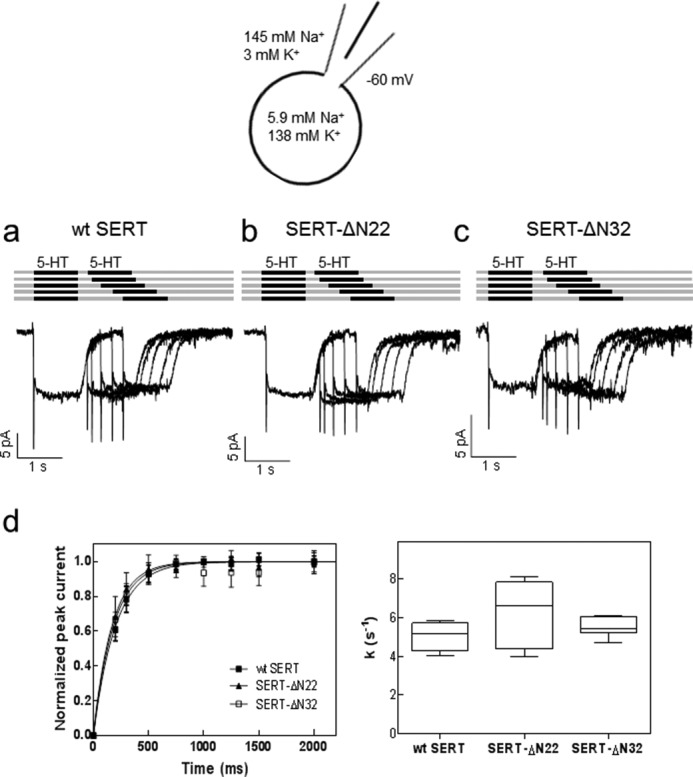FIGURE 4.

Substrate-induced currents elicited by paired pulse applications of serotonin to HEK293 cells expressing wild type SERT (a), SERT-ΔN22 (b), and SERT-ΔN32 (c) in the presence of a physiological Na+ gradient. a–c, peak current recovery protocol and representative traces. 5-HT (10 μm) was applied for 1 s followed by variable (increasing) washout intervals and subsequent 5-HT test pulses. The current amplitude of the peak current elicited by 5-HT represents the fraction of transporters available for 5-HT binding. Under the ionic conditions used (see schematic rendering), the transporter operates in the forward transport mode, which is evident from the steady state component of the current. Accordingly, the size of the second peak current reflects the fraction of SERT that returned to the outward facing conformation. d, the time course of peak current recovery was plotted for wild type SERT (closed squares), SERT-ΔN22 (closed triangles), and SERT-ΔN32 (open squares) and fitted to a monoexponential function. Data are means ± S.D. (error bars) from six independent experiments. The box plot shows the median recovery rates (k) and the interquartile range extracted from the individual monoexponential recovery curves; whiskers show maximum and minimum values. A Kruskal-Wallis test did not reveal any significant differences between intergroup and intragroup variation (p = 0.39).
